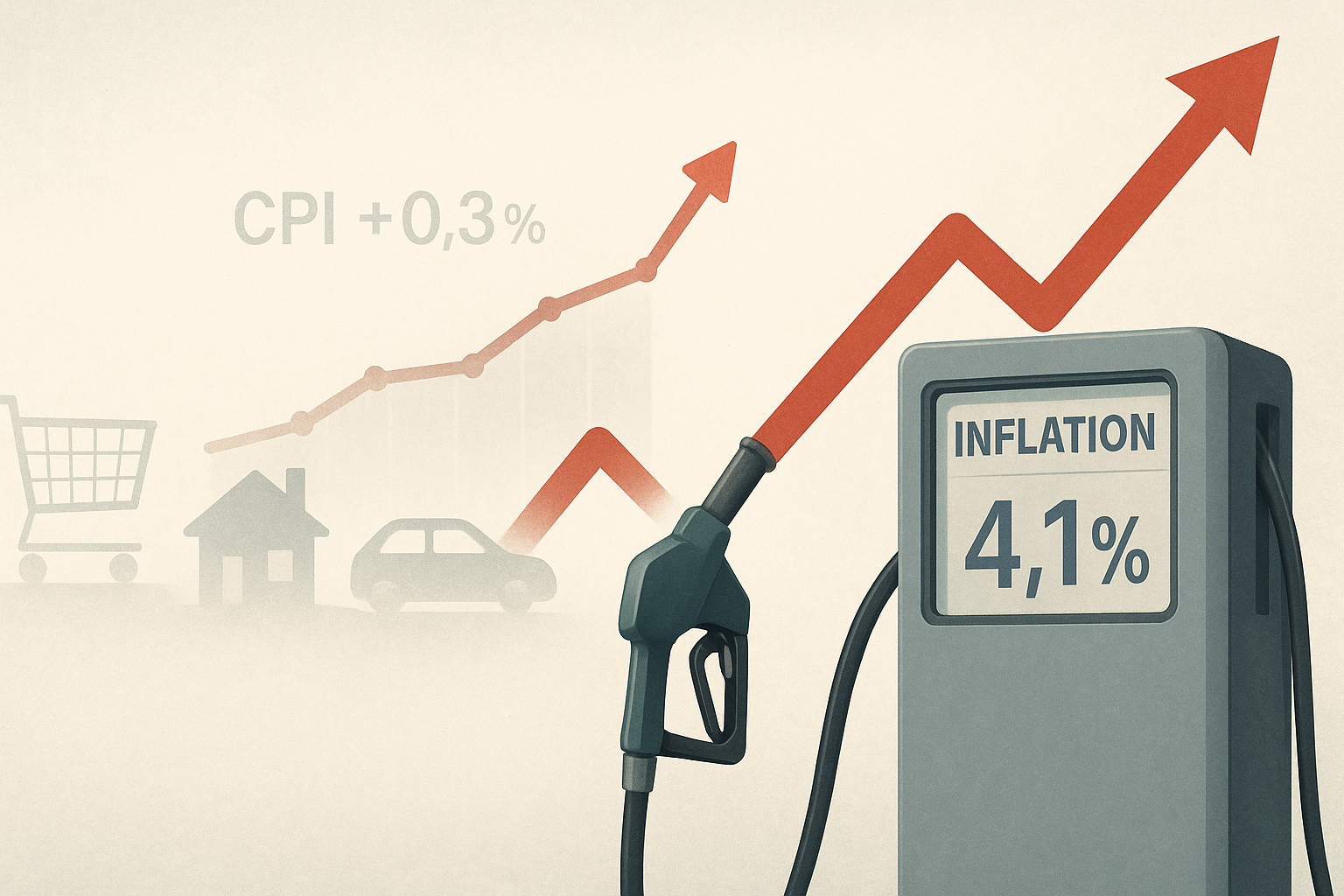September's inflation report landed yesterday with what you might call a polite thud. Not alarming enough to send economists scrambling for their recession playbooks, but certainly not the "all clear" signal markets had been hoping for.
The headline: Consumer prices rose 0.3% last month.
That's it? Three-tenths of a percent hardly seems worth the digital ink I'm spilling. But in the grand inflation narrative that's been dominating economic discussions for nearly three years now, even small numbers carry weight.
Let's cut to the chase—it was gas prices. Again. They jumped a hefty 4.1% in September alone, dragging the overall index higher like that friend who insists on ordering another round when everyone's ready to call it a night. The broader energy index climbed 1.5%, which, if you're the type who enjoys frightening yourself with hypotheticals (I occasionally am), would translate to nearly 20% annual inflation if sustained.
Thank goodness we don't annualize single months.
What's giving Fed officials their only comfort in this report is the so-called "core" inflation rate—that artificial construct that excludes food and energy because, apparently, people can opt out of eating and driving. This core rate rose a more modest 0.2%, down slightly from the 0.3% increases we saw in July and August.
"The Fed will absolutely latch onto that core number," says Maria Vassalou, co-chief investment officer of multi-asset solutions at Goldman Sachs Asset Management. I spoke with her shortly after the report's release, and she wasn't mincing words. "They need something positive to point to."
Year-over-year, inflation now sits at 3.0%—up a tick from August's 2.9%. The core rate held steady at 3.0% annually.
Look, we've seen worse. Much worse. Remember those 9% readings back in 2022? Compared to that, this report looks positively tame. But—and this is the crucial but—we're still running a full percentage point above the Fed's 2% target. That's not rounding error territory; that's persistent inflation territory.
Having covered these inflation reports since the post-pandemic surge began, I've noticed a pattern. Inflation doesn't leave gracefully. It retreats from one area only to pop up in another, like an economic game of whack-a-mole.
September's report shows this dynamic perfectly. While gasoline led the charge, several other categories continued their upward march: shelter costs (still stubbornly high despite the housing market cooldown), airline fares (up after several months of decline), recreation services, household furnishings...
The list goes on.
On the flip side, used car prices continued their welcome decline. Motor vehicle insurance and communication services also gave consumers a small break. Small mercies, I suppose.
The shelter component deserves special attention. It rose 0.4% for the month and is up 5.8% over the past year—nearly twice the overall inflation rate. This persistence reflects the well-known lag in how housing costs filter into inflation data, something economists understand but that continues to frustrate policymakers.
"It's like watching a slow-motion movie where you already know the ending," one Fed economist told me last month, speaking on condition of anonymity because they weren't authorized to comment publicly. "We know shelter inflation will eventually moderate, but the waiting is excruciating."
What does this all mean for interest rates? That's the $31 trillion question (roughly our national debt, but who's counting?).
Markets had been betting heavily on rate cuts beginning as early as December. This report doesn't entirely derail that timeline, but it certainly doesn't accelerate it either. Traders quickly adjusted their expectations after the release, with the probability of a December cut dipping below 50%.
For Jerome Powell and company, this inflation report is... complicated. The economy continues to show remarkable resilience—just last week we saw surprisingly strong job numbers—while inflation remains stuck in this awkward above-target range. Not a crisis, but definitely not mission accomplished.
The practical impact for average Americans is what economists sometimes callously refer to as "cumulative effects." Since January 2021, consumer prices have risen approximately 20%. That's a fifth of your purchasing power eroded in less than three years.
Wages have mostly kept pace during this period, but unevenly. Some workers have stayed ahead of inflation; others haven't. The resulting economic stress falls hardest on lower-income households, who spend more of their budgets on necessities with few substitution options.
The market reaction to yesterday's report was predictably mixed. Treasury yields jumped, with the 10-year hitting levels not seen since 2007. Stocks initially dipped before recovering some ground, proving yet again that equity markets sometimes exist in their own reality.
So where do we go from here? The Fed's next meeting is three weeks away, and between now and then we'll get another round of inflation data. If October's CPI shows similar patterns, expect Powell to maintain his "higher for longer" stance while perhaps hinting at the possibility of easing in early 2024.
For consumers hoping for price relief... well, don't hold your breath. The most likely scenario isn't falling prices but rather slower increases—that's how inflation typically works on the way down. The days of 2% inflation remain visible but still somewhat distant.
And for those keeping score at home, we're now at 30 consecutive months of above-target inflation. That's not just a streak; it's practically a lifestyle.
